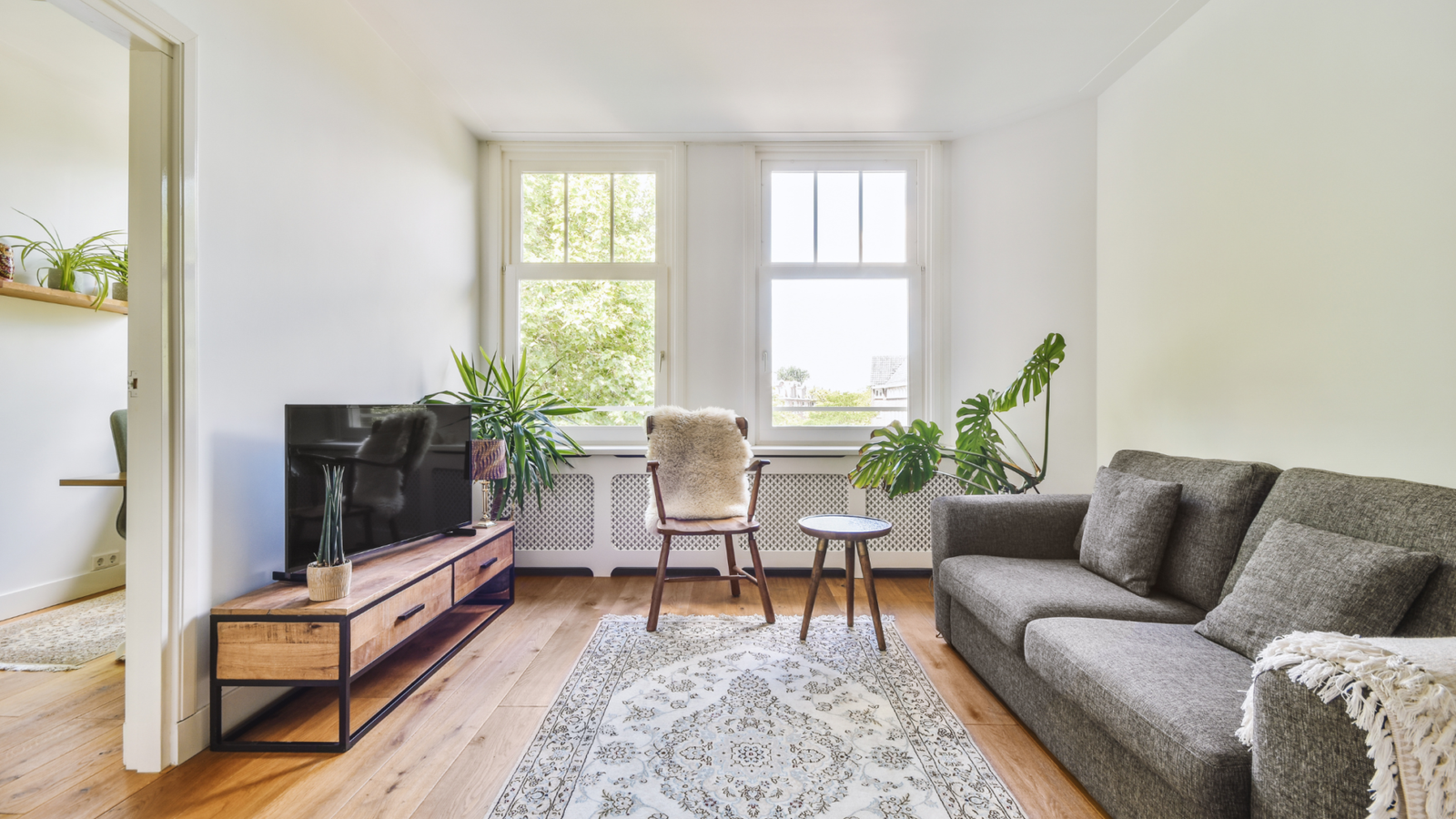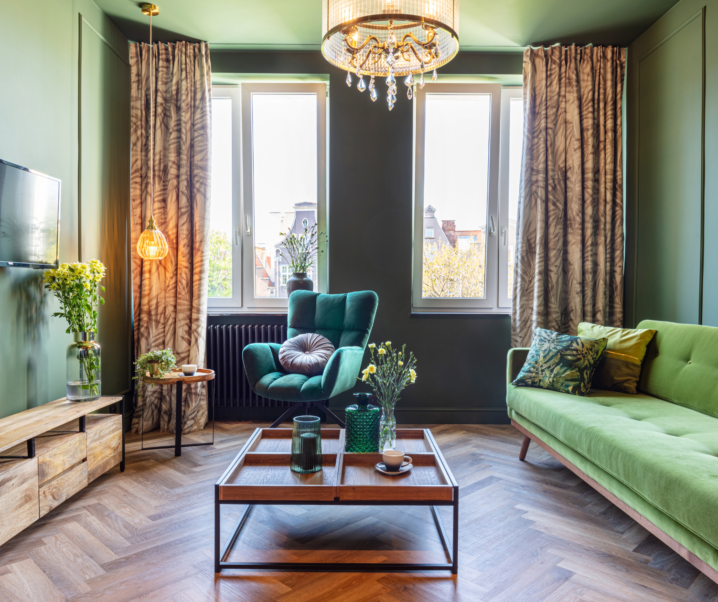Introduction:
Discover effective strategies for arranging furniture in a small living room. Maximise space utilisation and create a stylish, functional, and comfortable environment with these expert tips.
Arranging furniture in a small living room can be a daunting task. With limited space, it’s essential to make every square inch count. Fortunately, there are clever strategies that can help you optimise your small living room, creating a comfortable and visually appealing space. In this article, we will guide you through practical and space-saving tips to arrange furniture in your small living room, allowing you to maximise functionality while maintaining a sense of style.
1. Accurate Measurements for Optimal Placement:
Before embarking on rearranging your furniture, start by taking precise measurements of your living room. Note the dimensions of the room, doorways, windows, and any architectural features that might impact furniture placement. These measurements will provide a clear understanding of the available space and enable you to plan effectively, saving you from unnecessary trial and error.
2. Focus on Essential Pieces:
In a small living room, it’s crucial to prioritise essential furniture pieces to avoid overcrowding. Begin by selecting key elements such as a sofa, coffee table, and entertainment centre. Opt for appropriately sized furniture that fits comfortably in the room without overpowering it. By focusing on these essentials, you create a foundation for a functional and inviting living space.
3. Embrace Versatility with Multi-Functional Furniture:
Maximise your small living room’s potential by choosing furniture that serves multiple purposes. Look for sleeper sofas or daybeds with hidden storage compartments. Coffee tables with shelves or drawers provide additional storage options. By incorporating versatile pieces, you not only save space but also add functionality and organisation to your living room.
4. Create Well-Defined Zones:
Divide your small living room into distinct zones to maximise space utilisation. Establish areas for seating, entertainment, and even a small workspace if needed. Utilise rugs, furniture placement, or decorative screens to visually separate these zones while maintaining a cohesive flow throughout the room. This approach creates a sense of order and purpose within your living space.
5. Utilise Vertical Space for Storage:
When dealing with limited floor space, vertical storage is a game-changer. Invest in tall bookshelves or wall-mounted cabinets to store books, decorations, or other items. Floating shelves provide a stylish solution for displaying cherished objects without occupying valuable floor space. Utilising the vertical aspect of the room draws the eye upward, creating an illusion of spaciousness.
6. Enhance Space and Light with Mirrors:
Natural light and mirrors can work wonders in making a small living room appear larger. Position your furniture to allow ample light flow throughout the room, avoiding any obstructions. Strategically placed mirrors reflect light, create an illusion of depth, and contribute to the perception of a more expansive space. Make use of these elements to enhance brightness and openness.
7. Opt for Modular and Mobile Furniture:
Consider investing in modular furniture that offers flexibility and adaptability. Ottomans with hidden storage, nesting tables, or stackable chairs are excellent choices for small living rooms. These pieces can be easily rearranged to suit different needs, providing you with the freedom to transform your space effortlessly. Prioritising mobility enables you to adapt your furniture arrangement as required.
8. Mindful Placement and Traffic Flow:
When arranging furniture, ensure a logical flow and consider the traffic patterns within the room. Leave sufficient space for easy movement, avoiding any obstructions along pathways. Avoid blocking doorways or windows, as this can create a sense of congestion. Strive for a balance between openness and cosiness to create a
welcoming atmosphere.
9. Scale and Proportions:
Maintaining proper scale and proportions is vital when working with a small living room. Oversized furniture can make the space feel cramped and overwhelming. Instead, opt for appropriately sized pieces that allow for comfortable movement and a sense of openness. Consider low-profile furniture to create an airy and visually balanced environment.
10. Experiment and Adapt:
Finding the perfect furniture arrangement for your small living room may require some experimentation. Don’t be afraid to try different layouts, angles, and configurations. Explore various possibilities until you discover the arrangement that maximises both functionality and aesthetics. Embrace the process and enjoy the creative journey of transforming your space.
FAQs
Q: What sets Harins Chairs apart from other furniture brands?
A: Harvin Chairs is known for its commitment to quality, durability, and innovative designs, making it a reliable choice for furniture buyers.
Q: How can I ensure that the furniture matches my existing decor?
A: Look for furniture with versatile designs and neutral colours that can complement various styles.
Q: Are there any risks associated with buying furniture online?
A: While online shopping offers convenience, there’s a risk of receiving furniture that doesn’t meet your expectations. Thorough research and reading reviews can mitigate this risk.
Q: Can I return furniture if it doesn’t fit my space?
A: Many online stores have return policies, but it’s important to understand the terms and conditions before making a purchase.
Q: How do I ensure that the online store is reputable?
A: Look for customer reviews, check for secure payment options, and verify if the store has a physical address and customer support.
Q: What if the furniture arrives damaged?
A: Contact the online store’s customer service immediately and follow their instructions for returning or replacing the damaged item.
Conclusion:
Arranging furniture in a small living room requires careful consideration of space, functionality, and style. By measuring accurately, focusing on essential pieces, embracing versatility, and creating well-defined zones, you can optimise your living space. Remember to utilise vertical storage, enhance brightness with mirrors, and prioritise mobility with modular furniture. Mindful placement, proper scale, and proportion, along with experimentation, will ultimately lead you to an arrangement that maximises your small living room’s potential. With these space-saving tips and ideas, your small living room will become a cosy and inviting retreat for both you and your guests.
Best Furnitures onlineHarvin ChairsHarvin Lifestyle








What do you think?